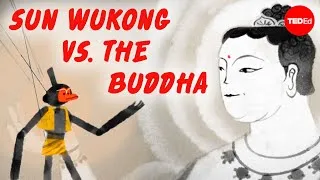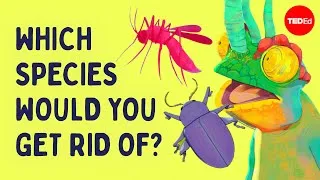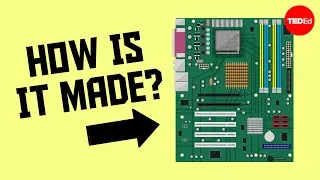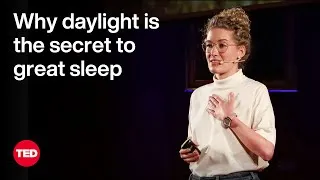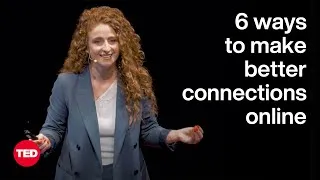請雙擊下方英文字幕播放視頻。
譯者: Helen Chang
審譯者: S Sung
00:07
You may take them for granted,
but your teeth are a marvel.
0
7021
4262
或許你把牙齒視為理所當然
但它們是個奇蹟
00:11
They break up all your food
over the course of your life,
1
11283
3150
在你一生中,它們弄碎你所有的食物
00:14
while being strong enough
to withstand breakage themselves.
2
14433
3830
而且自身夠強大,能承受破損
00:18
And they’re formed using
only the raw materials
3
18263
2920
而且形成它們的原料
只來自它們先前所研磨的食物
00:21
from the food they grind down
in the first place.
4
21183
3220
00:24
What’s behind their impressive strength?
5
24403
2431
它們令人印象深刻的力量背後是什麼?
00:26
Teeth rely on an ingenious structure
that makes them both hard and tough.
6
26834
4479
牙齒靠著巧妙的結構
使得它們既硬且韌
00:31
Hardness can be thought of as the ability
to resist a crack from starting,
7
31313
4318
硬度被視為防止開始產生裂縫的能力
00:35
while toughness is what stops
the crack from spreading
8
35631
3813
而韌性則阻止裂縫蔓延
00:39
Very few materials have both properties.
9
39444
2894
少有材料兼具這兩種屬性
00:42
For instance, glass is hard but not tough,
10
42338
3876
例如玻璃硬但不韌
00:46
while leather is tough but not hard.
11
46214
2749
而皮革則是韌而不硬
00:48
Teeth manage both by having two layers:
12
48963
3016
牙齒兩者兼具因為有兩層
00:51
a hard external cap of enamel, made up
almost entirely of a calcium phosphate,
13
51979
5465
幾乎全由磷酸鈣組成的堅硬琺瑯外層
00:57
and beneath it,
a tougher layer of dentin,
14
57444
3188
裡面有更堅硬的一層牙質
01:00
partly formed from organic fibers
that make it flexible.
15
60632
3661
部分的組成是有機纖維使它有彈性
01:04
This amazing structure is created
by two types of cells:
16
64293
3908
這了不起的結構由兩類細胞造成
01:08
ameloblasts that secrete enamel
17
68201
2794
分泌釉質的「造釉母細胞」
01:10
and odontoblasts that secrete dentin.
18
70995
3080
和分泌牙本質的「造牙本質細胞」
01:14
As they form teeth,
odontoblasts move inward,
19
74075
3028
在形成牙齒時
造牙本質細胞向內移動
01:17
while ameloblasts move out
and slough off when they hit the surface.
20
77103
4451
而造釉母細胞則向外移
一旦到了表面就會脫落
01:21
For enamel, this process produces long,
thin strands,
21
81554
4013
這過程會產生長又薄的琺瑯質串
01:25
each about 60 nanometers in diameter.
22
85567
3367
每個直徑約 60 奈米
01:28
That’s one one-thousandth
the width of a human hair.
23
88934
3361
是人髮千分之一的寬度
01:32
Those are bundled into rods,
packed together,
24
92295
3400
緊緊綁成一捆捆
01:35
tens of thousands per square millimeter,
25
95695
2698
每平方毫米裡頭有數萬捆
01:38
to form the shield-like enamel layer.
26
98393
3132
形成盾狀的琺瑯層
01:41
Once this process is finished,
your enamel can’t repair itself again
27
101525
3739
一旦完成這個過程
你的琺瑯不能再自我修復
01:45
because all the cells
that make it are lost,
28
105264
3481
因為所有的生成細胞全消失了
01:48
so we’re lucky that enamel
can’t be easily destroyed.
29
108745
3479
所以我們很幸運
因為琺瑯質不易被破壞
01:52
Odontoblasts use a more complex process,
but unlike ameloblasts, they stick around,
30
112224
6210
形成造牙本質細胞的過程更複雜
但與造釉母細胞不同
它們還留著
在你一生中持續分泌牙本質
01:58
continuing to secrete dentin
throughout your life.
31
118434
3411
02:01
Despite the differences in teeth
across the mammalian order,
32
121845
3331
儘管哺乳類動物牙齒的差異
02:05
the underlying process of tooth growth
is the same whether it’s for lions,
33
125176
4828
牙齒生長的基本過程相同
不論是獅子、袋鼠、大象
02:10
kangaroos,
34
130004
1031
02:11
elephants,
35
131035
929
02:11
or us.
36
131964
1602
或者我們
02:13
What changes is how nature sculpts
the shape of the tooth,
37
133566
3508
變化的是自然給牙齒形狀的造型
02:17
altering the folding and growth patterns
38
137074
2315
改變折疊和增長的模式
02:19
to suit the distinct diets
of different species.
39
139389
3845
以適應不同物種的飲食模式
02:23
Cows have flat molar teeth with parallel
ridges for grinding tough grasses.
40
143234
5279
牛有平行的平坦臼齒用於磨硬草
02:28
Cats have sharp crested molars,
like blades, for shearing meat and sinew.
41
148513
5679
貓有像刀片一樣鋒利的尖頭臼齒
用來剪切肉和筋
02:34
Pigs have blunt, thick ones,
useful for crushing hard roots and seeds.
42
154192
4891
豬有鈍、厚的臼齒
用於粉碎堅硬的根和種子
02:39
The myriad molars of modern mammals
43
159083
2419
現代哺乳動物的無數臼齒
02:41
can be traced back to a common form
called “tribosphenic,"
44
161502
3769
可以追溯到常見的「三尖齒」這形式
02:45
which first appeared
during the dinosaur age.
45
165271
2701
最先出現在恐龍時代
02:47
In the 19th Century,
paleontologist Edward Drinker Cope
46
167972
3989
十九世紀古生物學家
愛德華 · 德林克 · 科普
02:51
developed the basic model
for how this form evolved.
47
171961
3481
開發了這演變形式的基本模型
02:55
He hypothesized that
it started with a cone-like tooth,
48
175442
3560
他假設始於一個錐形的牙齒
02:59
as we see in many fishes,
amphibians, and reptiles.
49
179002
3380
正如我們在許多魚類
兩棲動物和爬行動物中看到的那樣
03:02
Small cusps were then added,
so the tooth had three in a row,
50
182382
4510
然後加入小尖頭
使牙齒有連續三個尖頭
03:06
aligned front to back,
and connected by crests.
51
186892
3742
前後對齊,由齒冠連接著
03:10
Over time, the cusps were pushed out
of line to make triangular crowns.
52
190634
4890
隨著時間推移,牙尖被推開
不再呈一直線,而是形成三角形的冠
03:15
Adjacent teeth formed a continuous
zigzag of crests for slicing and dicing.
53
195524
5669
相鄰的牙齒形成連續鋸齒形用於切割
03:21
A low shelf then formed
at the back of each set of teeth,
54
201193
3921
然後每組牙齒的後面形成低架子
03:25
which became a platform for crushing.
55
205114
2607
成了壓碎的平台
03:27
As Cope realized, the tribosphenic molar
served as the jumping-off point
56
207721
4824
正如科普所意識到的,三尖臼齒成了
03:32
for the radiation of specialized
forms to follow,
57
212545
3349
隨後各專門牙齒的起點
03:35
each shaped by evolutionary needs.
58
215894
2498
每個都隨著進化需求而塑造
03:38
Straighten the crests
and remove the shelf,
59
218392
2507
弄平波峰並去掉低架
03:40
and you’ve got the conveniently
bladed teeth of cats and dogs.
60
220899
3604
就有了貓和狗好用的牙齒
03:44
Remove the front cusp, raise the shelf,
and you’ve got our human molars.
61
224503
5832
去掉前尖,抬高低架
就成了人類的臼齒
03:50
A few additional tweaks get you
a horse or cow tooth.
62
230335
3690
一些額外的調整成了馬或牛的牙齒
03:54
Some details in Cope’s intuitive
hypothesis proved wrong.
63
234025
4209
某些科普直觀假設的細節是錯的
03:58
But in the fossil record,
64
238234
1201
但在化石記錄中
03:59
there are examples of teeth
that look just as he predicted
65
239435
3729
有些牙齒就像他所預測的樣子
04:03
and we can trace the molars of all living
mammals back to that primitive form.
66
243164
5111
所有現存哺乳類動物的臼齒
都可被追溯到他的原始模型
04:08
Today, the ability to consume
diverse forms of food
67
248275
3468
今天能夠食用不同形式食物的能力
04:11
enables mammals to survive in habitats
68
251743
2376
使哺乳動物能夠在各種棲息地中生存
04:14
ranging from mountain peaks
and ocean depths
69
254119
2926
從山峰、海洋深處
04:17
to rainforests and deserts.
70
257045
2224
到熱帶雨林和沙漠
04:19
So the success of our biological class
is due in no small measure
71
259269
4436
所以我們生物綱的成功
有相當的程度是在於
04:23
to the remarkable strength
and adaptability
72
263705
2590
哺乳類動物卑微臼齒的
卓越實力和適應性
04:26
of the humble mammalian molar.
73
266295
2500
New videos
關於本網站
本網站將向您介紹對學習英語有用的 YouTube 視頻。 您將看到來自世界各地的一流教師教授的英語課程。 雙擊每個視頻頁面上顯示的英文字幕,從那裡播放視頻。 字幕與視頻播放同步滾動。 如果您有任何意見或要求,請使用此聯繫表與我們聯繫。



